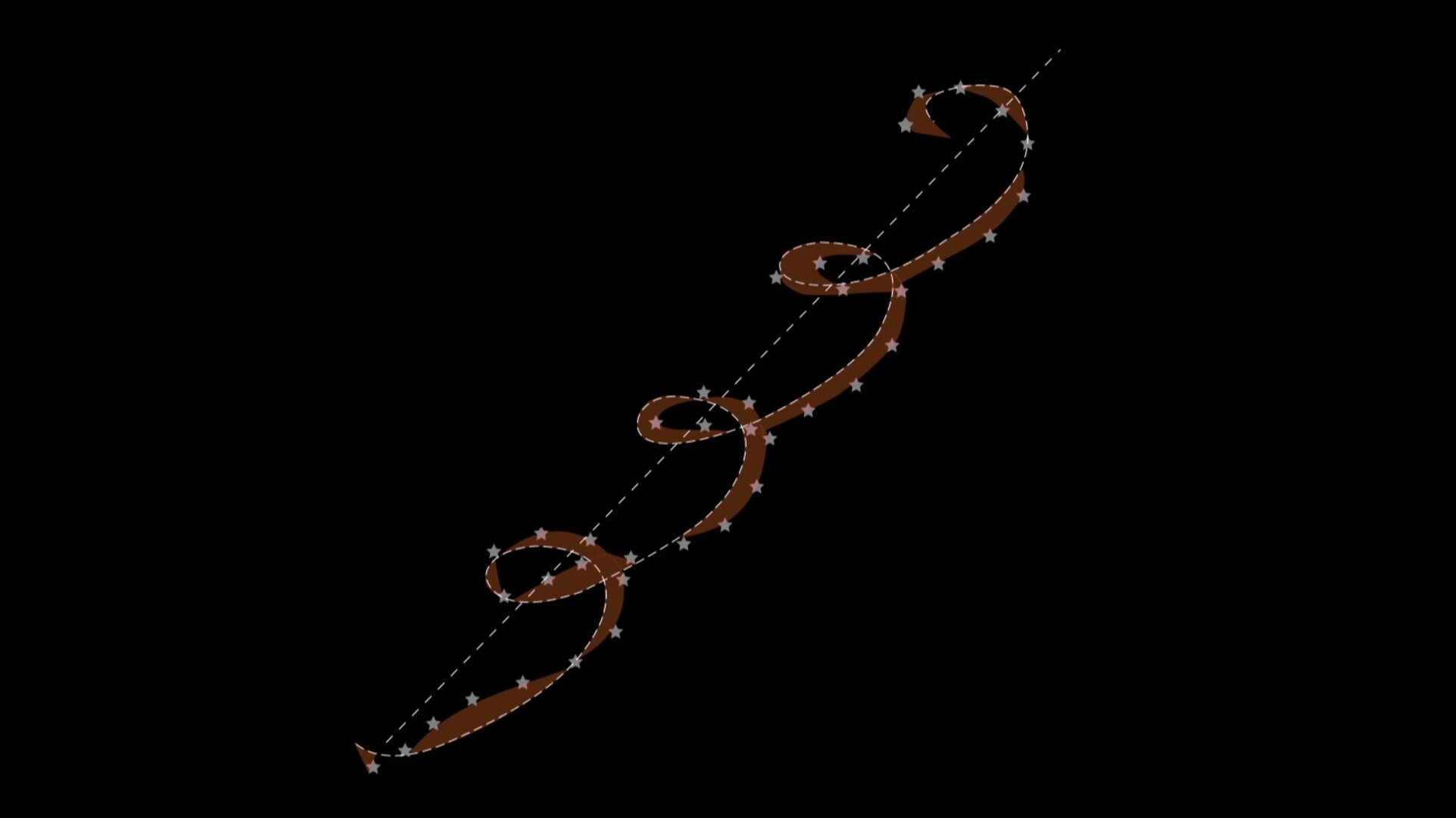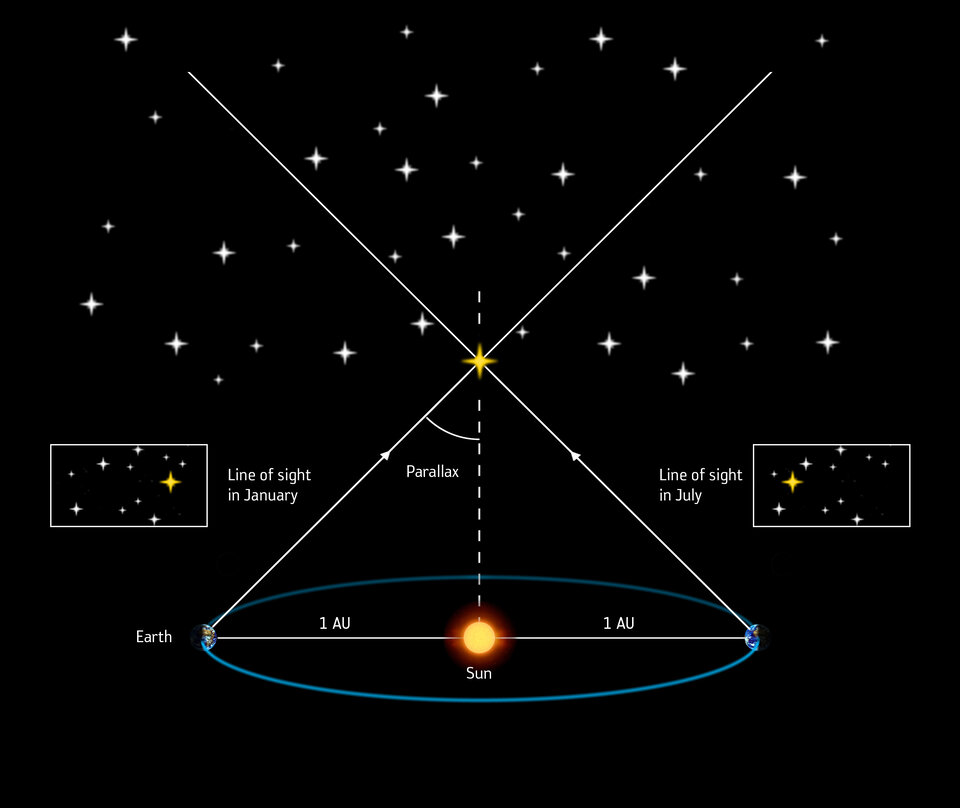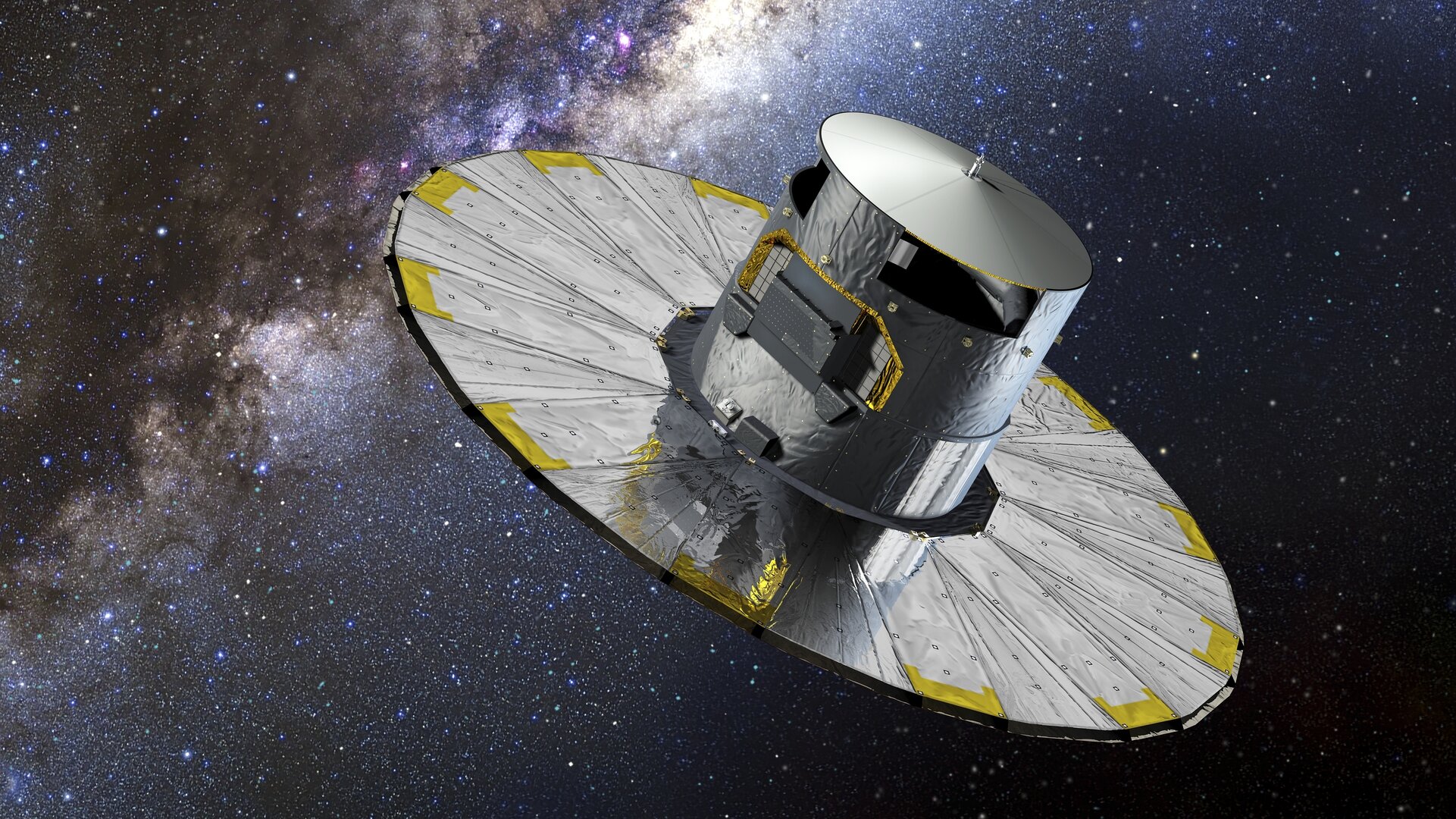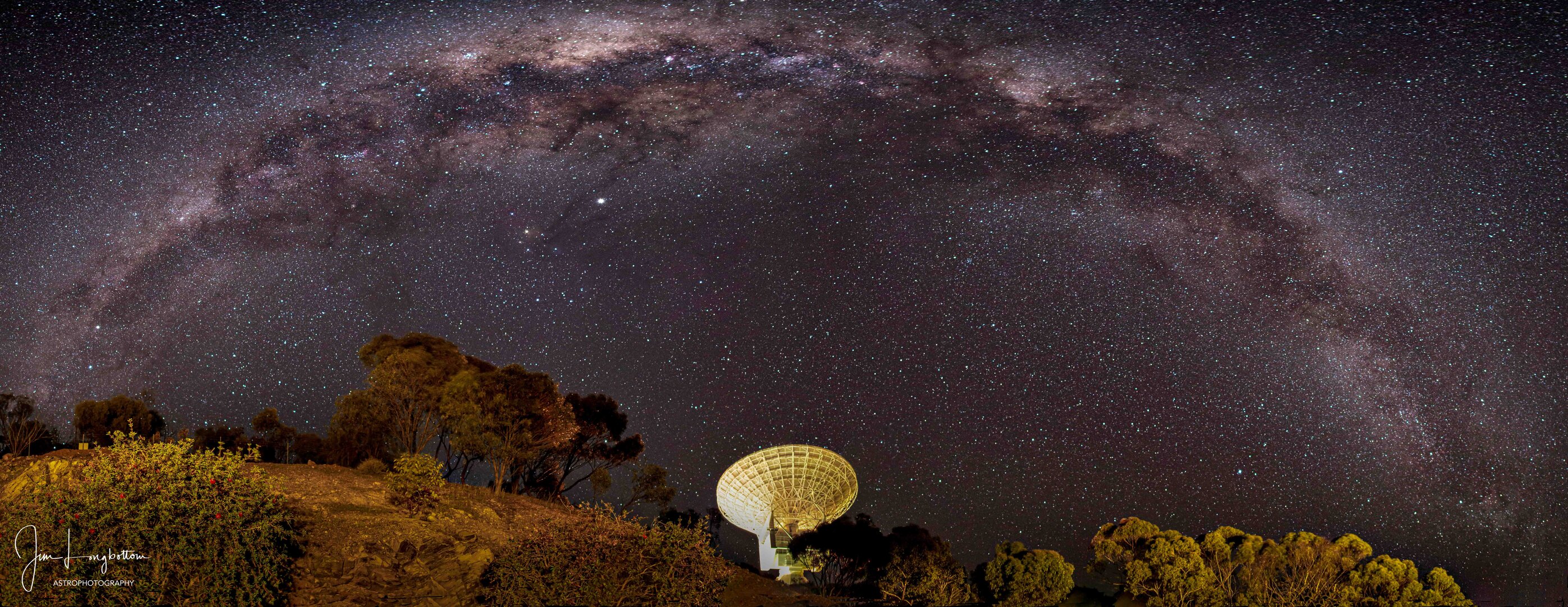Why was it so difficult to study the Milky Way before Gaia?
For us living on Earth, our planet is unique, different from all the other planets we see not only around the Sun but other stars as well. In fact, Earth is just one of hundreds of billions of planets orbiting the approximately 250 billion stars comprising our galaxy, the Milky Way. Until quite recently we knew very little about our galactic home. How has humankind’s understanding of the Milky Way evolved over the past century? And why has the study of our galaxy fully blossomed only after ESA’s satellite Gaia reached its spot in orbit and started scanning the sky?
You can’t see the forest for the trees
Located some 26 000 light years from the centre of the galaxy, a supermassive black hole known as Sagittarius A*, Earth sits close to one of the Milky Way’s spiral arms. These snail-shaped areas of dense stellar accumulation in the galaxy’s disc emanate from its central bulge and provide the shape characteristic to all so-called spiral galaxies, among which the Milky Way belongs.
Already in the 18th century, improving telescope technology enabled astronomers to see spiral shapes in other galaxies, then completely mysterious objects referred to only as spiral nebulae. But Earth’s position inside the Milky Way virtually prevented the scientists from seeing the forest for the trees. It took centuries to discover not only that the Milky Way itself had such a spiral structure, but also Earth’s position in it.
“It’s the same as if you are trying to tell the shape of a building while you are inside of it,” says Jos de Bruijne, Gaia Deputy Project Scientist at ESA. “To understand the shape of the galaxy, you need to know where the individual stars are. But the stars are very far apart and very far away, and to accurately measure their positions in three dimensions requires extreme precision.”
It took a long time for technology to get so advanced to enable such precise observations. The efforts to understand our cosmic neighbourhood, however, started already in Ancient Greece.
The small steps and giant leaps in astrometry


Access the video
Astrometry, the science of measuring the positions of objects in the sky and tracking their motions over time, is one of the oldest branches of astronomy. The ancient Greek astronomer Hipparchus of Nicaea compiled history’s oldest known stellar catalogue in the second century BCE. Relying only on naked eye observations and instruments such as gnomons, astrolabes, and armillary spheres, he was able to chart the positions of 850 stars with the precision of one degree (roughly twice the size of the Moon in the sky).
“If you look at the night sky with your eyes from a dark location, you’ll see at best about five thousand of the brightest stars,” says Jos. “Even though some appear brighter than others, they all seem to be at the same distance. In the past, astronomers could count those stars but had very limited opportunities to estimate their distances.”
When ancient scholars gazed at the bright band of the Milky Way crossing the pitch-dark ancient sky, they had no idea what they were looking at. Without telescopes, they couldn’t distinguish individual stars in what we know today is the galaxy’s disc viewed from within. The famous Greek philosopher Aristotle, for example, thought the Milky Way was a result of ‘fiery exhalation of some stars’ in the upper parts of Earth’s atmosphere.
“There are about two or three hundred billion stars in the disc of our galaxy and the Sun, and Earth with it, is inside this disc,” says Jos. “When we observe the galaxy from Earth, we see that these stars are closely packed together in the band of the Milky Way in the sky. The stars start being in front of each other, there is a lot of dust and gas, which absorb light and make the stars look faint.”
The invention of the telescope in the early 17th century eventually enabled Italian astronomer Galileo Galilei, the first person to look at the sky with an ‘aided eye’, to observe that the Milky Way’s band does, in fact, consist of a myriad stars.
The invention of the telescope also led to advances in astrometry. In 1725, English astronomer John Flamsteed published the first stellar catalogue compiled with the help of a telescope, expanding Hipparchus’ observations to almost 3000 stars and improving precision to 10-20 arcseconds (one arcsecond is 1/3600 of a degree). By the end of the 18th century, French astronomer Jérôme Lalande increased the size of the catalogue to 50 000 stars. Still a long way from Gaia’s billion and from the three-dimensional understanding of the Milky Way as a dynamic, evolving system that we have today.
In 1718, Edmund Halley found that stars are not static but move over time. When comparing his observations with Hipparchus’ catalogue, he noticed that the positions of the stars Sirius, Arcturus and Aldebaran differed by more than half a degree.
The difference observed by Halley would lead to the discovery of proper motion, the actual motion of stars in the sky, which is one of the key characteristics that Gaia measures.
“To track how positions of stars change over time and to be able to do it for a sufficient number of stars, you need a level of precision that is basically impossible to achieve through ground-based observations because the Earth’s atmosphere distorts the images of the stars that you observe,” says Jos. “Even though the stars travel at speeds of thousands of kilometres per hour, due to their distance, we can only observe the tiniest differences in their positions over thousands of years. Most stars change their position far less than the half-degree difference spotted by Halley.”
Without understanding the motions of vast numbers of stars, astronomers could not understand the large-scale galactic processes. It is no surprise then, that humankind’s understanding of the Milky Way evolved so slowly.
How far are the stars?

In fact, up until the late 19th century, astronomers believed the Milky Way was the entire Universe and the Sun was at its centre. It was a fairly small Universe, only 6000 light years across. When astronomers first observed the spiral nebulae in the 18th century, most thought these were just random accumulations of stars and gas at the fringes of the Milky Way. Some scientists, however, suggested these nebulae could be much more – entirely new Universes, new galaxies similar to the Milky Way, but so distant that they only appear to us like small clouds in the sky.
To solve the conundrum, astronomers would have to be able to determine the distances of these spiral nebulae.
One way to determine the distance of stars was discovered already in the first half of the 19th century. It relies on the measurement of the so-called parallax, a tiny elliptical motion each star appears to perform in the sky every year in addition to its proper motion.
This motion in the sky, observed already by astronomers in ancient Greece, is not the motion of the star itself but a reflection of Earth’s motion around the Sun. The size of this ellipse is proportional to the distance of the star from Earth – the smaller the motion, the farther away the star.
The first person to make and publish a reliable parallax measurement was German astronomer Friedrich Bessel. In 1838, based on his measurements, Bessel calculated that the star 61 Cygni, one of the stars of the Cygnus constellation, must be about 10 light years away from Earth.
Jérôme Lalande may have catalogued the celestial positions in two dimensions of 50 000 stars in 1801, it took, however, much more time and effort to grow the catalogue of the stars’ parallaxes and thus distances.
In the late 1830s, Bessel’s contemporaries and rivals Wilhelm Struve and Thomas Henderson provided one parallax measurement each, bringing the total number to three. By the early 20th century, the list of stars with measured parallaxes grew to a few hundred, mostly thanks to the work of Dutch astronomer Jacobus Kapteyn.
The mysterious spiral nebulae, however, were too far to have observable parallaxes and so the mystery of the Milky Way’s nature remained unresolved until the 1920s.
Is the Milky Way all there is?


Access the video
In 1920, American astronomers Harlow Shapley and Heber Curtis, met in what entered astronomy history books as the Great Debate. The two discussed the nature of the spiral nebulae and their relation to the Milky Way. Shapley believed the Milky Way was the entire Universe – a massive disorganised cloud of stars, gas and dust. He thought the spiral nebulae were minor sub-galaxies inside this super-Universe. Curtis thought the spiral nebulae were separate galaxies, island universes, and the Milky Way was only one of them.
Four years later, fellow American astronomer Edwin Hubble found the truth. Using a different method that extended the reach of parallax, he managed to determine that the Andromeda nebula was at least 1 million light years away from Earth, way too far to be part of the Milky Way. At that time, astronomers finally realised that the Milky Way was just one of many galaxies.
Dutch astronomer Jan Oort, sometimes dubbed the master of the galactic system, made further leaps in our understanding of the galaxy. In the 1920s, he used proper motions of stars to prove that the Milky Way isn’t motionless but rotates, and calculated the speeds at which stars at various distances orbit around the galactic centre. His work also led to the discovery of Earth’s position in the galaxy.
The space breakthrough
Over the following decades, astronomers, aided by the improvements in telescope technology, started finally piecing together a crude three-dimensional picture of the spiral-shaped Milky Way. The advancements went hand in hand with the expansion of the catalogues of stars, their parallaxes and proper motions.
In 1924, American astronomer Frank Schlesinger published a catalogue with the parallaxes of almost 2000 stars, probing stellar distances out to a few dozen light-years from Earth. His catalogue was extended to about 6000 stars by Louise Freeland Jenkins in 1952, and to over 8000 stars by William van Altena in 1995. But the flickering effect caused by Earth's atmosphere and the distortion of the telescopes caused by Earth's gravity prevented astronomers from reaching a precision better than about 0.01 arcseconds.
“Today, with advanced technologies such as adaptive optics and interferometry, we can reach accuracies of a few dozen micro-arcsecond on large ground-based telescopes,” says Jos. “These data, however, always refer to individual objects or a very small numbers of stars. In fact, these telescopes today use data from Gaia to calibrate their outputs.”
Nearly 25 years before Gaia, in 1989, ESA sent into space the first ever mission designed to chart the solar neighbourhood in the Milky Way. The Hipparcos satellite, named after the pioneering ancient Greek astronomer, created a catalogue containing information about positions, parallaxes and proper motions of 117 955 stars with a precision of 0.001 arcseconds, allowing astronomers to probe stellar distances out to over 300 light years.
At that time, the Hipparcos mission represented a giant leap forward, enabling major discoveries in virtually all fields of astronomy. Advancements in technology accomplished in the 1990s and 2000s, however, radically improved the star-observing power of its successor: Gaia.
“Hipparcos had a detector with only one pixel and could only observe one star at a time,” says Jos. “Gaia, on the other hand, has nearly a billion pixels in its detectors and can observe thousands of stars at the same time. Also, Gaia’s mirrors are 20 times larger and its light-collecting efficiency is much higher.”In orbit since 2013, Gaia now charts the precise positions of more than one billion stars. The data it generates include information about parallaxes, proper motions, as well as velocities of the observed stars and their colours.
Although one billion stars represents only one percent of the galaxy, Gaia’s Milky Way catalogue is still by far the biggest ever created and will keep astronomers busy for decades to come. Thanks to Gaia, astronomers can not only understand the shape and size of the galaxy, but also model the galactic motions over billions of years into the past and the future and reconstruct the processes that led to the its formation and evolution.


